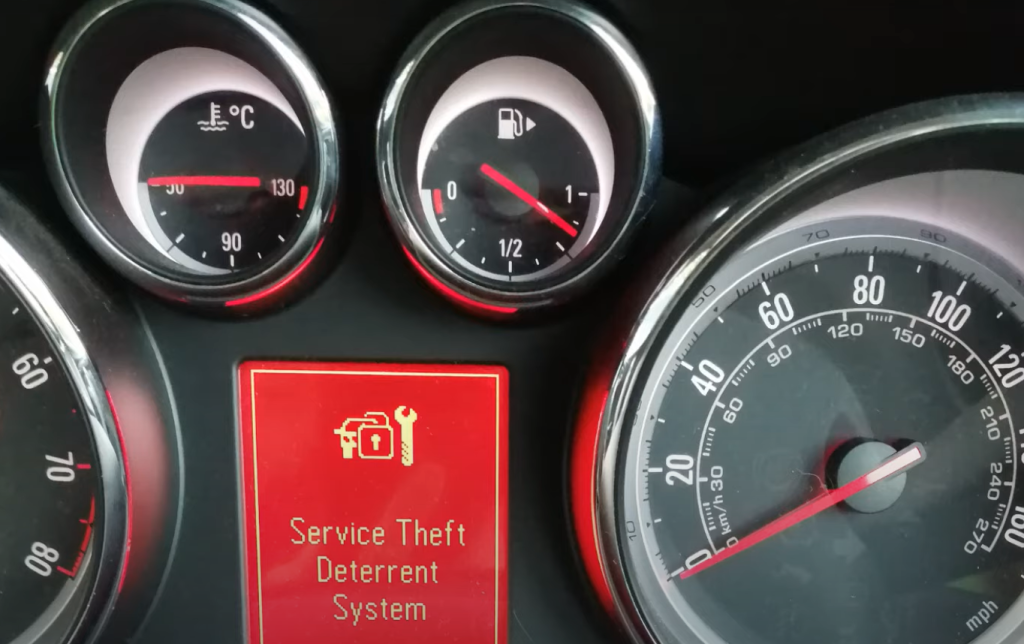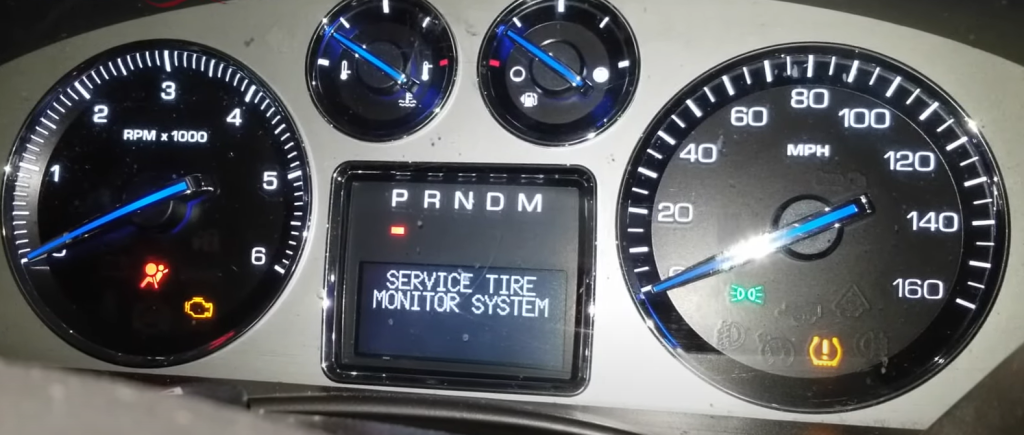Theft attempted messages can be a real headache for car owners. These alerts pop up on your dashboard when your vehicle’s security system thinks someone tried to break in. They’re meant to keep you safe, but can be annoying if they won’t go away.
Removing theft attempted messages often involves resetting your car’s security system. This can usually be done by turning the key in the ignition or pressing a button on your key fob. If that doesn’t work, you might need to check for broken sensors or get help from a mechanic.
Fixing this issue is key for your peace of mind. A stuck message could mean your alarm isn’t working right. It’s smart to take care of it quickly to keep your car safe and working well.
Key Takeaways
- Security system resets often clear theft attempted messages
- Faulty sensors may cause persistent alert messages
- Professional help might be needed for complex security issues
Understanding Theft Attempted Messages
Theft attempted messages are alerts from a vehicle’s security system. They indicate possible unauthorized access or tampering. These messages can appear on various devices and have different causes.
Different Devices and Systems
Theft attempted messages can show up on different parts of a car. The main dashboard display often shows these alerts. Some cars have a separate security screen. Others use the infotainment system to show warnings.
Modern cars use a mix of technologies for anti-theft systems. These may include key fobs, sensors, and alarms. Each system can trigger a theft attempted message in its own way.
Some cars use smartphone apps to send theft alerts. These apps can notify owners even when they’re far from their vehicle.
Common Causes
Several things can trigger a theft attempted message. A common cause is using the wrong key or a dead key fob battery. This makes the car think someone is trying to break in.
Faulty door sensors might also set off the alarm. If a door doesn’t close properly, the system may think it’s been forced open.
Checking for faulty sensors is a good first step when troubleshooting. Sometimes, extreme weather can affect sensors and trigger false alarms.
Weak car batteries can cause security system glitches. This might lead to unexpected theft messages.
Actual break-in attempts, of course, will trigger these alerts. It’s important to check the car for signs of tampering if the cause isn’t obvious.
Initial Steps Before Removal
When faced with a theft attempted message, it’s crucial to take the right first steps. These initial actions can help resolve the issue safely and effectively.
Assess the Situation
Start by checking your car’s owner’s manual for specific information about your vehicle’s anti-theft system. This can provide valuable insights into why the message appeared.
Look for any signs of actual theft attempts, such as damaged locks or broken windows. These could indicate a real security breach.
Examine the surrounding area for potential triggers that might have set off the alarm system. This could include nearby construction, loud noises, or even wildlife.
Ensure Safety and Security
Before attempting to remove the message, unlock the car door using the key fob or physical key. This helps verify that the vehicle recognizes the authorized key.
Check all doors, windows, and the trunk to make sure they are properly closed and locked. An improperly closed door can trigger the alarm system.
If there’s any suspicion of an actual theft attempt, contact local authorities to report the incident. They can provide guidance and investigate if necessary.
Consider moving the vehicle to a well-lit, secure location if it’s currently in a vulnerable spot. This can prevent further issues and provide peace of mind.
Removing Messages From Electronic Devices

Getting rid of unwanted messages on your devices helps protect your personal info. Different devices have their own ways to delete these messages.
Smartphones and Tablets
On phones and tablets, you can block numbers and delete texts to stop scam attempts. For iPhones, go to Settings, then Messages. Turn on “Filter Unknown Senders” to sort out texts from unknown numbers.
On Android, open the Messages app. Tap the three dots icon and look for spam filter options. Both systems let you delete texts by swiping left or right.
To really clean your device, back up important files first. Then do a factory reset. This erases all data, including any hidden bad files.
Computers and Laptops
On computers, removing scam messages often means cleaning your email inbox. Use your email program’s spam filter to catch many bad messages.
Check your spam folder often. Delete fishy emails without opening them. Don’t click links or download files from senders you don’t know.
For extra safety, run anti-virus scans on your computer regularly. This can catch harmful files that might have slipped through. Keep your operating system and security software up to date for the best protection.
Addressing Physical Systems
Physical security systems play a crucial role in preventing theft attempts. These systems protect vehicles and homes from unauthorized access and intrusion.
Vehicle Anti-Theft Systems
Modern vehicles come equipped with various anti-theft features. Immobilizers, alarm systems, and GPS tracking are common examples. These systems work together to deter thieves and alert owners of potential threats.
Immobilizers prevent engine start without the correct key. This makes hot-wiring nearly impossible. Alarm systems use sensors to detect break-ins or tampering. When triggered, they emit loud sounds and may flash lights.
GPS tracking allows owners to locate stolen vehicles. Some systems can even remotely disable the engine. Many cars now use keyless entry systems for added security. These require a special fob to unlock doors and start the engine.
Home Security Alarms
Home security alarms protect against break-ins and unauthorized entry. They use sensors on doors, windows, and within rooms to detect intruders. When triggered, alarms sound and often alert a monitoring service.
Modern systems offer smartphone integration. This allows homeowners to arm, disarm, and monitor their system remotely. Many include video cameras for real-time viewing and recording.
Motion sensors are a key component. They detect movement inside the home when the system is armed. Some alarms use glass break detectors to sense window damage. Advanced systems may include smoke and carbon monoxide detectors for comprehensive protection.
Smart locks add another layer of security. They allow keyless entry and can track who enters the home and when.
Preventative Measures for the Future
Taking proactive steps can help avoid theft attempted messages and keep your vehicle secure. Regular upkeep and smart habits play key roles in prevention.
Regular Maintenance and Updates
Keeping your car’s security system in top shape is crucial. Schedule regular check-ups with a trusted mechanic. They can spot and fix any issues with sensors or alarms before they cause problems.
Update your car’s software when new versions come out. Many modern vehicles get over-the-air updates. These often include security improvements.
Replace your key fob battery yearly. A weak battery can lead to false alarms or system glitches.
Test your car alarm monthly. This ensures it’s working right and helps you spot any odd behavior early on.
Best Practices for Theft Prevention
Smart habits can deter thieves and prevent false alarms. Always lock your doors, even in safe areas. Use a steering wheel lock or kill switch for extra protection.
Park in well-lit areas when possible. If you have a garage, use it. Thieves prefer easy targets.
Don’t leave valuables in plain sight. Hide or remove items that might tempt a thief.
Consider adding a GPS tracker to your car. This can help recover your vehicle if it’s stolen.
Be careful with spare keys. Don’t hide them on or near your car. Thieves know common hiding spots.
Frequently Asked Questions
Car owners often face issues with theft attempted messages on their dashboards. These alerts can appear on various vehicle models and may require different solutions. Let’s address some common questions about removing these messages.
How do I clear the ‘theft attempted’ message from my GMC Terrain’s dashboard?
To clear the message on a GMC Terrain, try pressing the unlock button on the key fob. If this doesn’t work, insert the key into the ignition and turn it to the “On” position for a few seconds. This often resets the system and clears the alert.
What steps are involved in removing the ‘Theft Attempted’ message on a Cadillac vehicle?

For Cadillac vehicles, start by locking and unlocking the doors using the key fob. If the message persists, insert the key into the ignition and turn it to the “On” position for about 10 seconds. This should reset the anti-theft system and remove the message.
Why does my Chevy vehicle display a ‘theft attempted’ message, and how can I resolve it?
Chevy vehicles may display this message due to faulty sensors or a triggered alarm system. To resolve it, check for any visible damage to door or hood sensors. Try unlocking the car with the key fob and starting the engine normally.
What does the ‘theft attempted’ message on the dashboard indicate?
This message indicates that the vehicle’s security system detected potential unauthorized access. It could be triggered by tampering, unauthorized entry attempts, or suspicious activity near the vehicle. The alert aims to notify the owner of possible security breaches.
How to deactivate the ‘theft attempted’ warning on a Chevy Silverado?
For a Chevy Silverado, use the key fob to lock and unlock the doors. If the message remains, insert the key into the ignition and turn it to the “On” position for about 15 seconds. This often resets the anti-theft system and clears the warning.
What can I do to get rid of the ‘theft attempted’ alert on a Chevy Cruze?
To remove the alert on a Chevy Cruze, start by using the key fob to unlock the doors. If this doesn’t work, insert the key into the ignition and turn it to the “On” position without starting the engine. Hold it there for about 10 seconds to reset the system.


